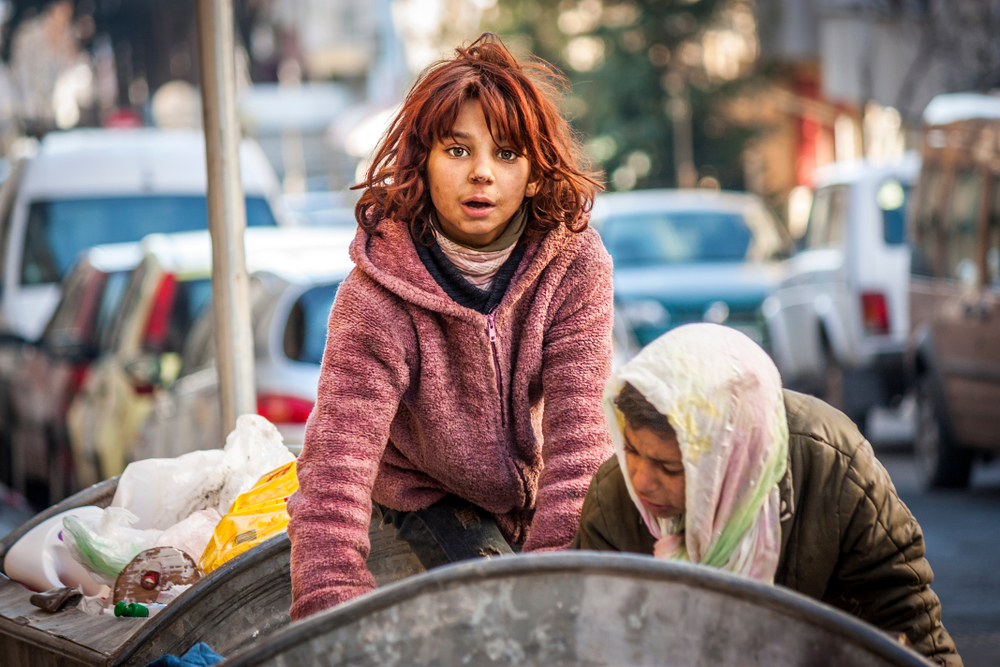![]() What does “justice” look like for young people experiencing homelessness in the United States? As one of the wealthiest nations in the world, it is troubling to consider the numerous ways that we, as a society, fail youth and young adults in securing one of the most basic needs: shelter. To live in a world grounded in compassion, empathy and equity, we must consider how young people enduring housing insecurity, or homelessness, navigate these structural failures. Once we understand the complex injustices of youth’s experiences, we can better move forward in truly improving the lives of young people living at the margins of society.
What does “justice” look like for young people experiencing homelessness in the United States? As one of the wealthiest nations in the world, it is troubling to consider the numerous ways that we, as a society, fail youth and young adults in securing one of the most basic needs: shelter. To live in a world grounded in compassion, empathy and equity, we must consider how young people enduring housing insecurity, or homelessness, navigate these structural failures. Once we understand the complex injustices of youth’s experiences, we can better move forward in truly improving the lives of young people living at the margins of society.
The importance of language
The first step in acknowledging the breadth and depth of homelessness experienced by young people is promoting person-first language. Words are powerful tools in shaping attitudes and ideologies, and modifying how we describe youth embedded in housing insecurity is a major step in challenging harmful stereotypes and advocating for social justice.
For example, the image of a “homeless youth” or “high-risk youth” can conjure negative stereotypical perceptions tied to deviance and criminality. The phrase “young person experiencing homelessness,” meanwhile, opens avenues for empathy, compassion and justice as it humanizes youth as individuals, rather than solely defining them by their life circumstances.
Caregiving constraints
Young people experiencing homelessness do not live in a social bubble, but are immersed in numerous social networks that shape their life experiences. In many cases, youth who become homeless have endured extremely conflicted family and caregiving environments characterized by

Rachel Schmitz
widespread poverty and instability. While family rejection is often described by youth as a primary catalyst to their experience of homelessness, wider structural constraints such as generational poverty and family health challenges also play a role when caregivers face significant barriers in providing for youth.
Many youth aging out of foster care also experience homelessness, and young people often report the conflicts they endured in foster care, such as abuse, neglect and lack of support. Young people who turn 18 do not magically have all the skills and resources needed to navigate dominant markers of “adulthood” like education, employment and housing.
Oftentimes, youth in foster care struggle with numerous challenges tied to their mental health and basic needs. So when youth age out of foster care, they are often pushed out of their dwellings with little to no resources to utilize during this transition and can quickly find themselves homeless. Therefore, we must critically examine our social structures surrounding youth caregiving that perpetuate injustice in the lives of youth experiencing homelessness.
Limitations of the law
The negative stereotypes framing youth experiencing homeless as deviant also impacts how legal structures and agencies interact with youth. Young people with a history of homelessness often face significant challenges in navigating legal structures. These challenges range from police officers regulating where youth can spend time following “quality of life” ordinances to the hyperpolicing of youth’s behaviors by law enforcement, such as substance use and panhandling. In these ways, the “justice system” is indeed reinforcing social inequalities by more heavily policing and punishing the most marginalized in our society: people who are young, poor and homeless.
These limitations of the law in the lives of youth enduring homelessness also intersect with marginalized social statuses across race, ethnicity, gender and sexuality. Youth of color experiencing homelessness are often policed to a greater extent than their white peers, which can influence their future opportunities if they then have to manage the stigma of police contact. Child welfare government systems, including foster care, juvenile detention centers and mental health facilities, can be especially unsafe environments for lesbian, gay, bisexual, transgender and queer (LGBTQ) youth as providers may enact prejudice and discrimination against youth.
Diverse intersections of youth’s experiences
Populations of youth enduring homelessness are incredibly diverse across multiple social identities, including race, ethnicity, gender, sexuality, age, ability and others. Around 40% of youth experiencing homelessness identify as LGBTQ, which underscores the need to examine how social justice for youth should be considered within the context of their complex social statuses and identities.
LGBTQ youth often face distinctive family challenges where family members police youth’s identities, which, along with abuse, could impact their pathways to homelessness. Intersecting with race and ethnicity, the number of LGBTQ youth of color involved in child welfare and juvenile justice systems, as well as living in homelessness, is rising. Governmental policy, however, is failing to keep pace in its omission of acknowledging disparities across social identities.
What can we do better?
Although the structural constraints and limitations in pursuing justice for youth experiencing homelessness are vast, there is still hope. Many young people experiencing homelessness develop and draw from inner strength in overcoming life’s challenges, often known as resilience. Notably, LGBTQ young people may understand their difficult experiences with homelessness as an opportunity to grow stronger and gain control over their lives.
With the goal of supporting young people with histories of homelessness or housing insecurity, there are many things we can do on the individual, community and structural levels to pursue true social justice for youth. First, we can care. By educating ourselves on issues of homelessness in society and listening to young people’s experiences in their own words, we can develop genuine empathy and compassion so that we care about making society better for everyone.
Secondly, we can get involved in our community organizations that work to support young people experiencing homelessness. Involvement can take a lot of different forms depending on both the organization and the volunteer, but the work is rewarding and reminds us of the importance of creating a society for all.
Finally, vote. Political participation is necessary if we want to see positive change in our society where we have lawmakers reflecting our interests of social justice. In spite of all the negativity in the world, there is still room for justice to emerge victorious if we work together to elevate the voices and experiences of youth in homelessness by taking them from the margins to the center.
Rachel M. Schmitz is an assistant professor of sociology at Oklahoma State University. She received her Ph.D. from the University of Nebraska-Lincoln and currently conducts research with LGBTQ+ people to better understand their diverse life experiences.
